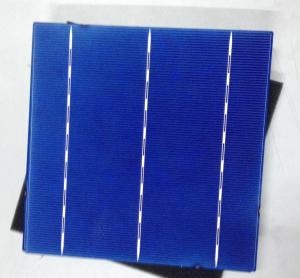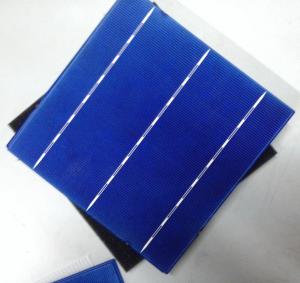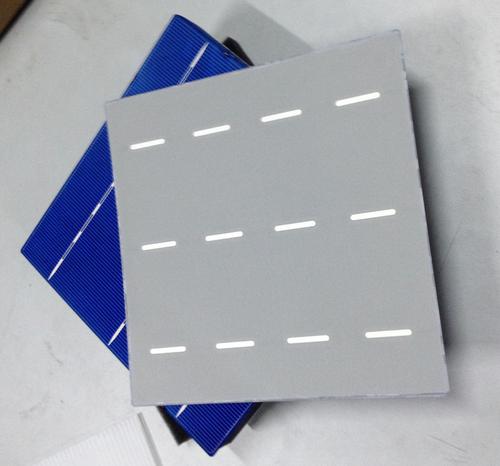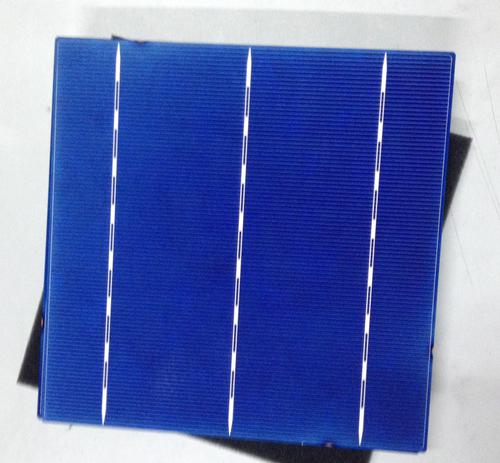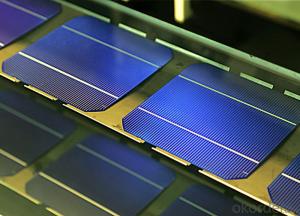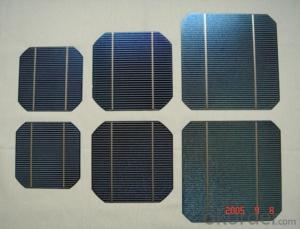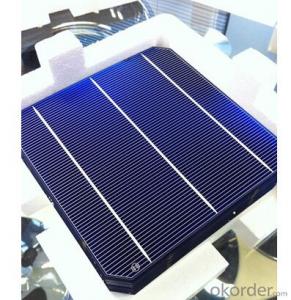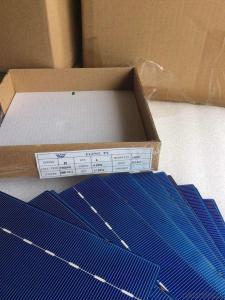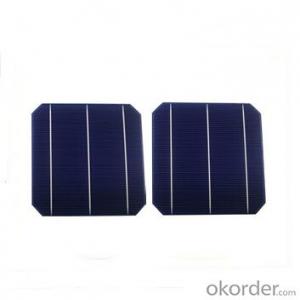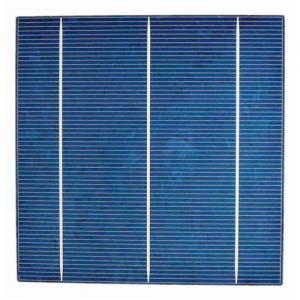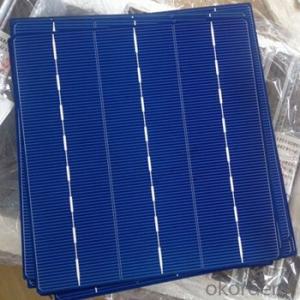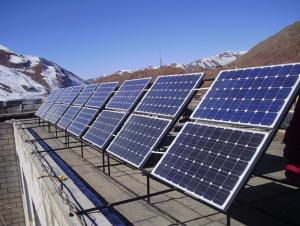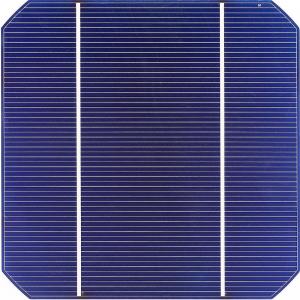Purchase Solar Cells Bulk - World-Beating 25-Year Life, 17.6% Efficiency
- Loading Port:
- Shanghai
- Payment Terms:
- TT OR LC
- Min Order Qty:
- 1000 pc
- Supply Capability:
- 5000000 pc/month
OKorder Service Pledge
OKorder Financial Service
You Might Also Like
Brief Introduction of Solar Cells
A solar cell, is an electrical device that converts the energy of light directly into electricity by the photovoltaic effect, which is a physical and chemical phenomenon. It is a form of photoelectric cell, defined as a device whose electrical characteristics, such as current, voltage, or resistance, vary when exposed to light. Solar cells are the building blocks of photovoltaic modules, otherwise known as solar panels.
Introduction of our Company
Our core business is the design and manufacture of III-V epitaxial material used in cellular phones and other wireless devices, and the design and manufacture of solar cells and solar sheets for a variety of applications, including unmanned aerial vehicles (UAVs), spacecraft, and terrestrial collectors.
Founded in 2000, we are well equipped to conduct its business. The company occupies a 30,000 square foot facility in Niles, a northern suburb of Chicago, Illinois. The facility contains a clean room and device fabrication and test laboratory. We own all the tools and equipment necessary to grow, fabricate, and test epitaxial material and solar cells and sheets. The company owns a set of metalorganic chemical vapor deposition (MOCVD) tools capable of high volume production. We also possess the tools and equipment required to fabricate and test semiconductor device structures and solar cells.
We are dedicated to producing quality products to meet customer needs. We are an ISO 9001-certified company. Production begins only after we are sure that all required customer specifications have been met. In order to ensure the quality of our products, we employ sophisticated quality control processes.
We prides itself on the quality of its employees. Some members of our technical staff are among the world’s foremost experts in the growth and processing of GaAs- and InP-based electronic devices and solar cells. Our staff supports customers, not only during the product development period, but also during production in order to enable continuing improvements in final product performance and yield.
We also performs contract research and development. Since 2003, we have been a prime federal contractor on more than thirty programs to develop solar cells, transistors, and lasers. A key result of this innovation has been the development of the epitaxial lift-off (ELO) process, which uses in its line of solar cell and solar sheet products. We have also supported other companies in the performance of their research and development programs. Many of the innovations developed at our have been incorporated into commercial products.
Specifications of Polycrystalline Solar Cells
Format : 156 mm × 156 mm ± 0.5 mm
Thickness: 210 μm ±40 μm
Front (-) : 1.5mm bus bars (silver),blue anti-reflection coating (silicon nitride)
Back (+) : 2.5mm wide soldering pads (silver) back surface field (aluminium)
Efficiency (%) | Pmpp (W) | Umpp (V) | Impp (A) | Voc (V) | Isc (A) |
18.00% | 4.38 | 0.528 | 8.291 | 0.631 | 8.869 |
17.80% | 4.33 | 0.525 | 8.252 | 0.629 | 8.821 |
17.60% | 4.29 | 0.532 | 8.053 | 0.633 | 8.541 |
17.40% | 4.23 | 0.528 | 8.092 | 0.624 | 8.632 |
17.20% | 4.19 | 0.524 | 7.992 | 0.62 | 8.458 |
17.00% | 4.14 | 0.52 | 7.972 | 0.623 | 8.5 |
Advantage of Polycrystalline Solar Cells
1. Tire-1 Solar Cells’ Manufacturer Quality Guarantee. With a complete and sophisticated quality government system, our Quality Management have arrived world’s leading place. Customer can receive Tire-1 Cells Maker’s Quality Standard Products.
2. Trusted Warranty. We can supply trusted after-sales service to our customer. If our cells are found not in conformity to the specification of manufacturer, or should the inspected quantity found in shortage, or should the packing found damaged, the buyer has the right to claim to the seller. The claim, if any, should be presented to seller within 30 days after cargo's arrival date to the port, together with related inspection report and photos issued and provided by a reputable independent surveyor such as SGS.
3. World’s Leading Manufacturer Equipment. We imported the newest and leading production equipment from abroad. Advanced equipment can guarantee the stable quality of cells. Auto production line can also save labor cost which will further cut our production cost.
4. Bulk supply: With the production capacity of 500MW, we can produce large quantity every month. This can satisfy most customer requirement.
Usage of Polycrystalline Solar Cells
Solar cells are often electrically connected and encapsulated as a module. Photovoltaic modules often have a sheet of glass on the front (sun up) side, allowing light to pass while protecting the semiconductor wafers from abrasion and impact due to wind-driven debris, rain, hail, etc. Solar cells are also usually connected in series in modules, creating an additive voltage. Connecting cells in parallel will yield a higher current; our solar cells have passed IEC Certification. With high and stable quality, our cells can greatly improve the performance of Solar Modules.
Applications of Polycrystalline Solar Cells
Assemblies of photovoltaic cells are used to make solar modules which generate electrical power from sunlight, as distinguished from a "solar module" or "solar panel". A solar array generates solar power using solar energy.
Packaging & Delivery of Polycrystalline Solar Cells
Carton Box Package and Deliver by air. It should be noticed that it should be avoid of water, sunshine and moist.
Factory Picture of Solar Cells
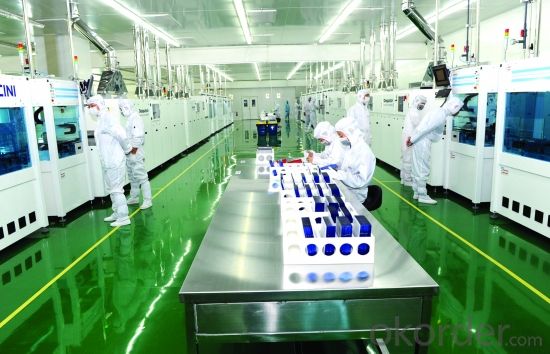
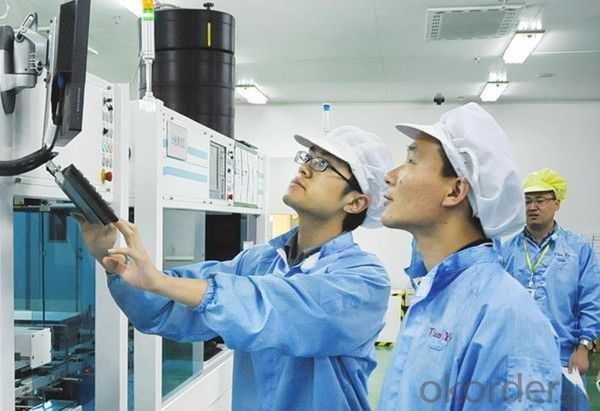
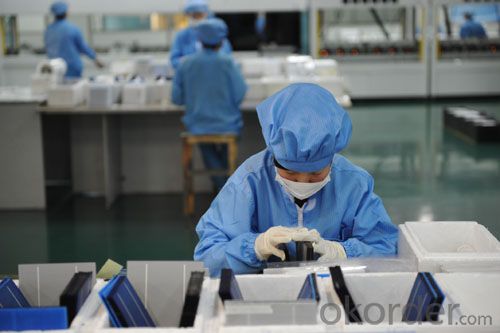
Package Picture of Solar Cells
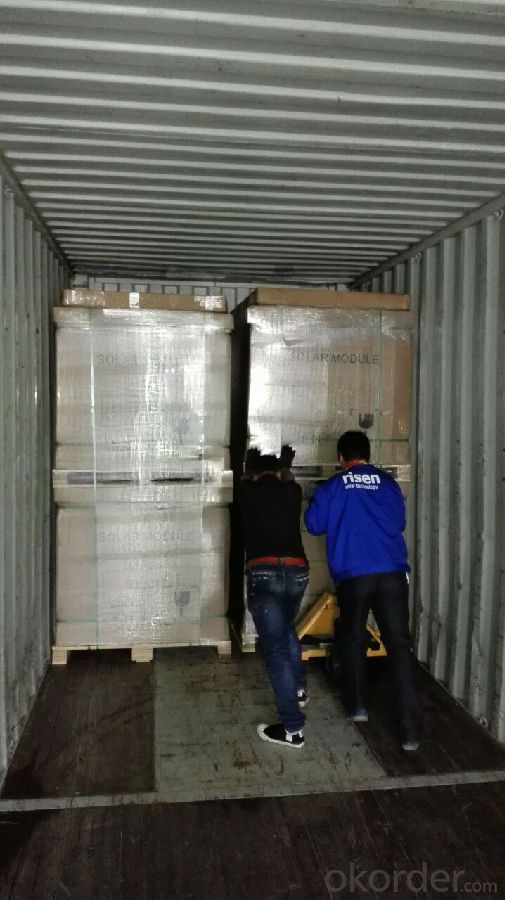
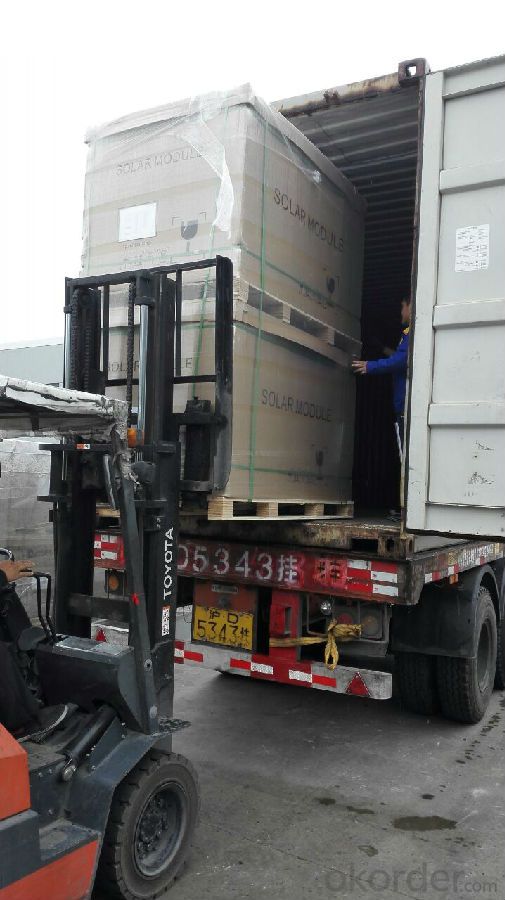
FAQ
We have organized several common questions for our clients,may help you sincerely:
1. What’s price per watt?
A: It’s depends on the quantity, delivery date and payment terms of the order. We can talk further about the detail price issue. Our products is high quality with lower price level.
2. Can you tell me the parameter of your solar cells?
We have different series of cells with different power output, both from c-si to a-si. Please take our specification sheet for your reference.
3. How do you pack your products?
We have rich experience on how to pack the panels to make sure the safety on shipment when it arrives at the destination.
4. Can you do OEM for us?
Yes, we can.
5. How long can we receive the product after purchase?
In the purchase of product within three working days, We will arrange the factory delivery as soon as possible. The perfect time of receiving is related to the state and position of customers. Commonly 7 to 10 working days can be served.
- Q: Can solar cells be used for military applications?
- Yes, solar cells can be used for military applications. They can provide a reliable and renewable source of power in remote and off-grid locations, reducing the dependency on fuel logistics. Solar cells can be used to power communication systems, surveillance equipment, and even provide energy for soldiers in the field. Additionally, solar-powered devices are silent, making them suitable for stealth operations.
- Q: What is a monocrystalline solar cell?
- A monocrystalline solar cell is a type of solar panel that is made from a single crystal structure, typically silicon. It is known for its high efficiency and sleek, black appearance. The single crystal structure allows for better electron flow, resulting in greater energy conversion from sunlight into electricity.
- Q: How do solar cells perform in areas with high levels of wildfire smoke?
- Solar cells generally perform less efficiently in areas with high levels of wildfire smoke. The smoke particles in the air can reduce the amount of sunlight reaching the solar panels, thereby decreasing their energy production. Additionally, the smoke can settle on the surface of the panels, creating a layer that further hinders the absorption of sunlight. Regular cleaning may be required to maintain optimal performance in such areas.
- Q: Can solar cells be used for powering hospitals?
- Yes, solar cells can be used for powering hospitals. Solar energy can be converted into electricity by solar cells, and this electricity can be used to power various equipment and systems in hospitals, such as lighting, heating, cooling, and medical equipment. Solar power can provide a sustainable and reliable source of energy, especially in areas with limited access to the grid or unreliable power supply. Additionally, solar energy can help reduce hospitals' carbon footprint and operating costs in the long run.
- Q: What are the different sizes of solar cells?
- Solar cells come in various sizes, ranging from small ones typically used in calculators and devices, to larger ones used in residential and commercial applications. The sizes of solar cells can vary depending on the specific purpose and power output required.
- Q: How do solar cells perform in desert environments?
- Solar cells perform exceptionally well in desert environments due to the high levels of sunlight and low humidity. The arid conditions and lack of cloud cover ensure that solar panels receive maximum exposure to sunlight, resulting in increased energy production. Additionally, the dry climate helps prevent dust and debris from accumulating on the panels, minimizing any potential efficiency losses.
- Q: Can solar cells be used for powering remote research stations?
- Yes, solar cells can be used for powering remote research stations. Solar cells, also known as photovoltaic cells, convert sunlight into electricity, making them an ideal choice for locations where grid connections are impractical or non-existent. By harnessing the power of the sun, solar cells can provide a reliable and sustainable source of energy for remote research stations, ensuring continuous power supply for various scientific activities and equipment.
- Q: How are solar cells installed on rooftops?
- Solar cells are typically installed on rooftops through a process that involves assessing the roof's suitability, preparing the surface, mounting the solar panels, connecting them to the electrical system, and ensuring proper wiring and grounding for optimal performance.
- Q: How do solar cells handle lightning strikes or electrical surges?
- Solar cells do not have built-in protection against lightning strikes or electrical surges. However, they are usually connected to a surge protection device or a lightning arrestor to divert the excessive current away from the solar panel system. This helps to minimize the risk of damage to the solar cells and associated equipment.
- Q: Can solar cells be used for powering electric vehicles in motion?
- Yes, solar cells can be used for powering electric vehicles in motion.
Send your message to us
Purchase Solar Cells Bulk - World-Beating 25-Year Life, 17.6% Efficiency
- Loading Port:
- Shanghai
- Payment Terms:
- TT OR LC
- Min Order Qty:
- 1000 pc
- Supply Capability:
- 5000000 pc/month
OKorder Service Pledge
OKorder Financial Service
Similar products
Hot products
Hot Searches
Related keywords

